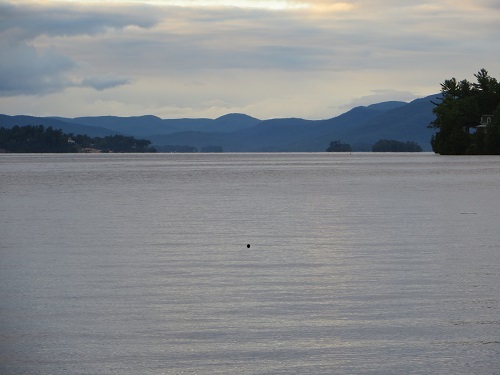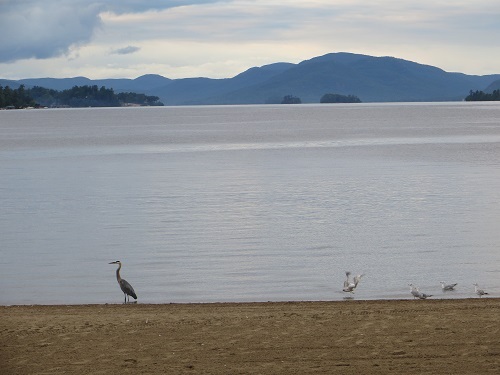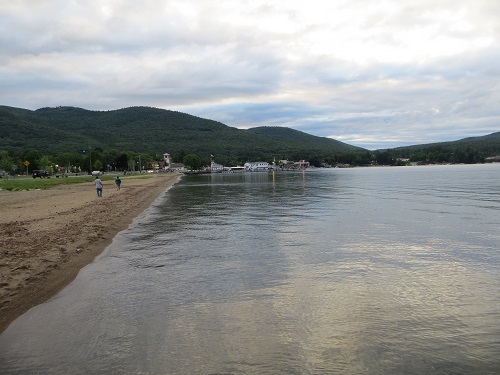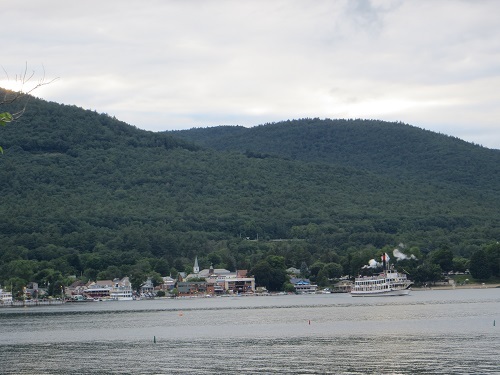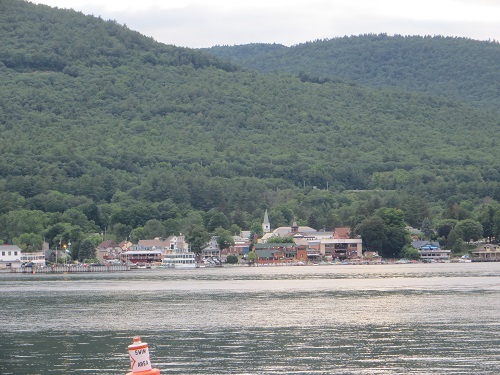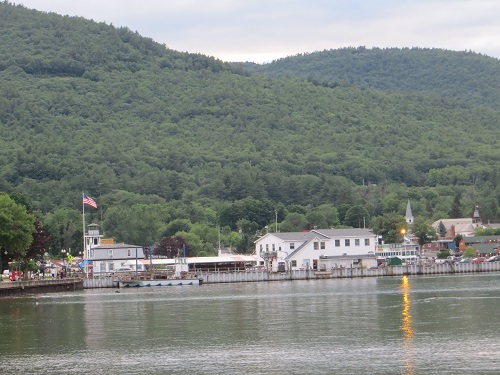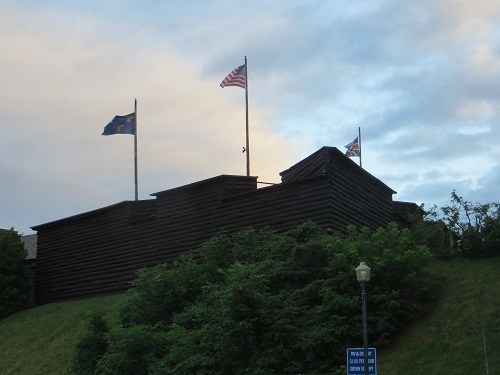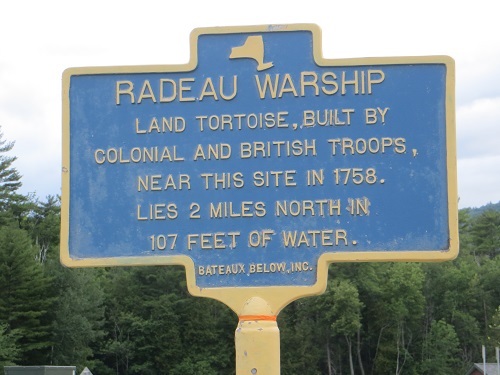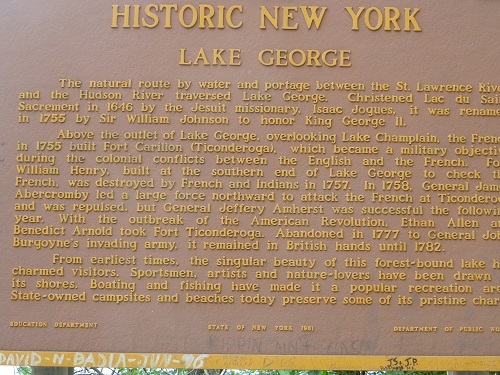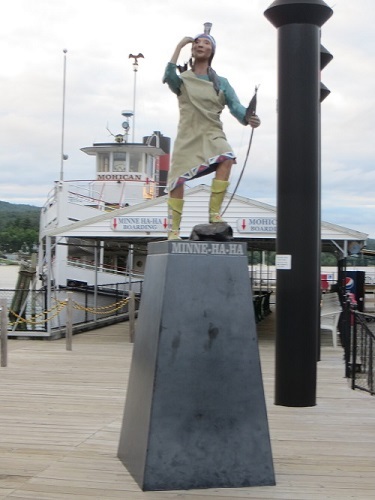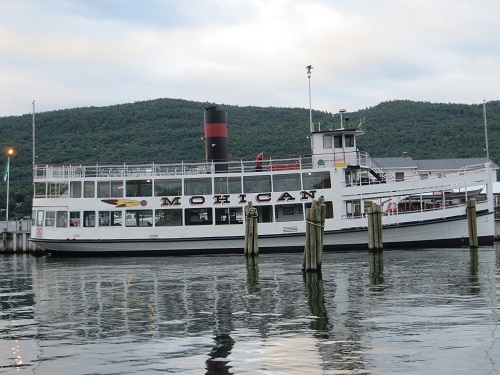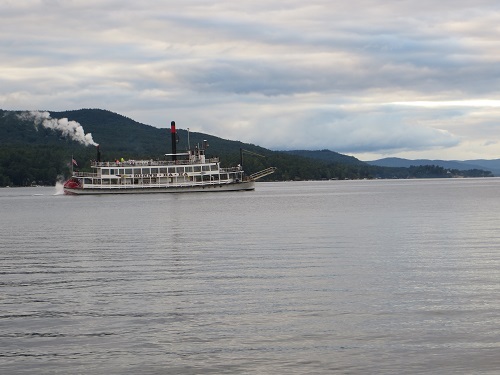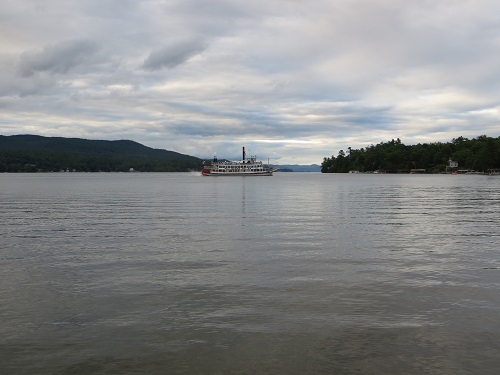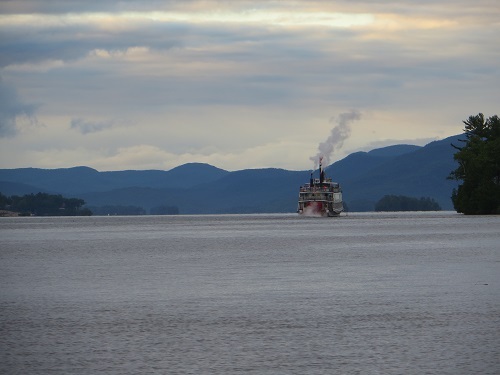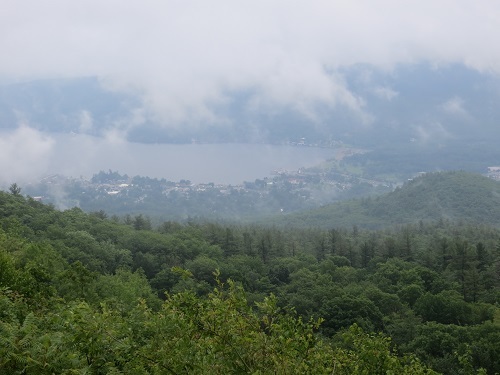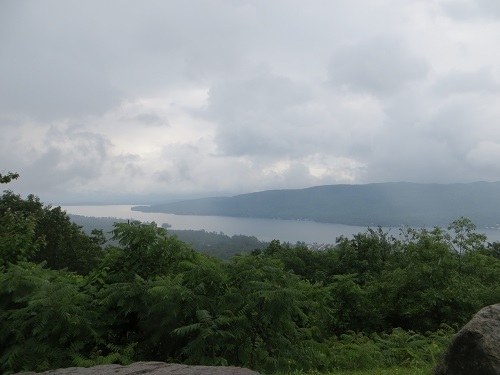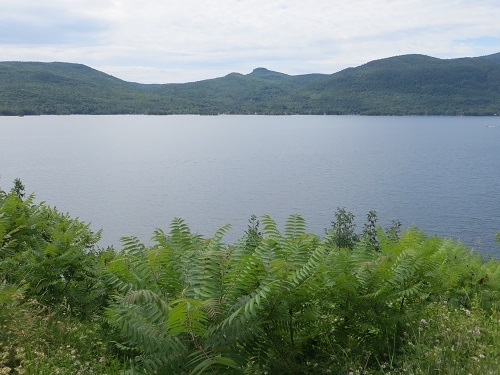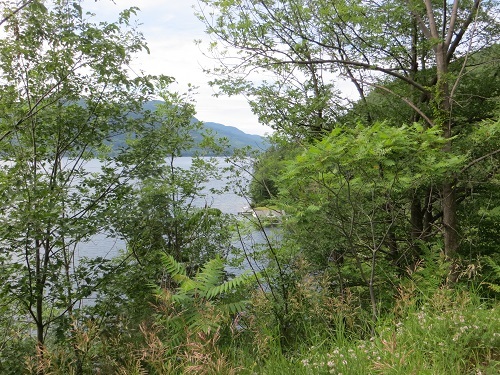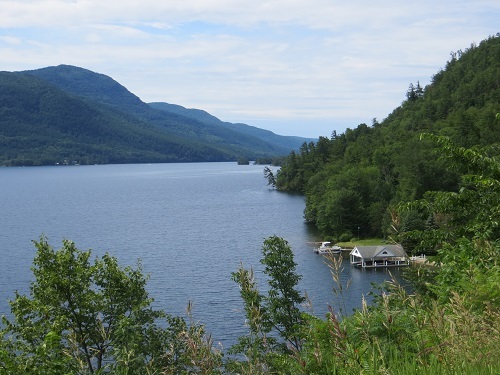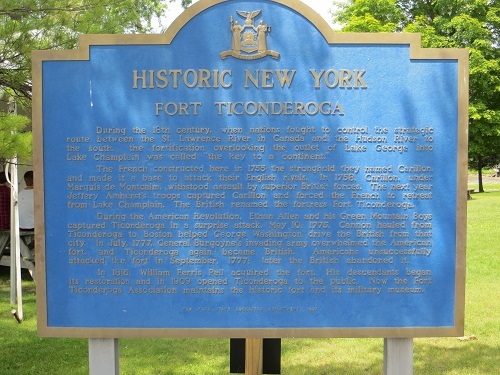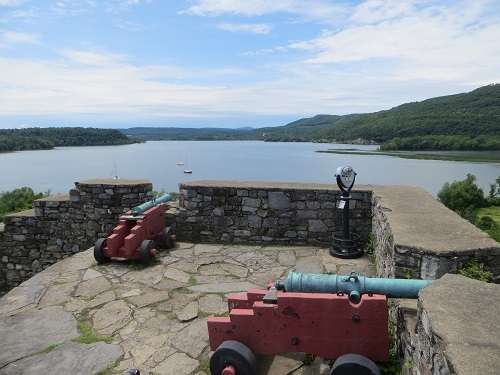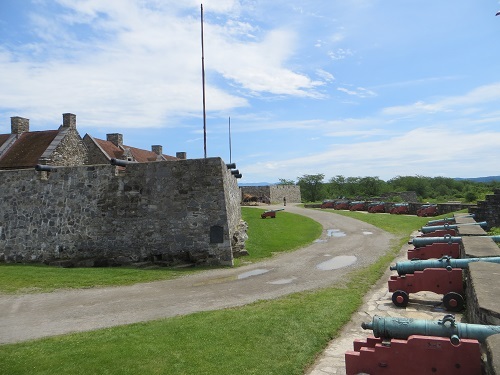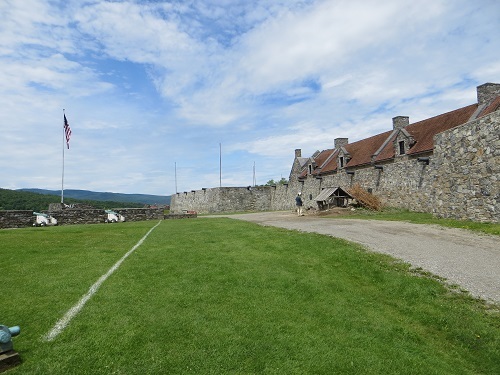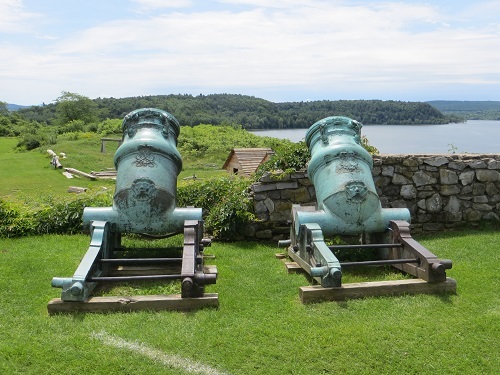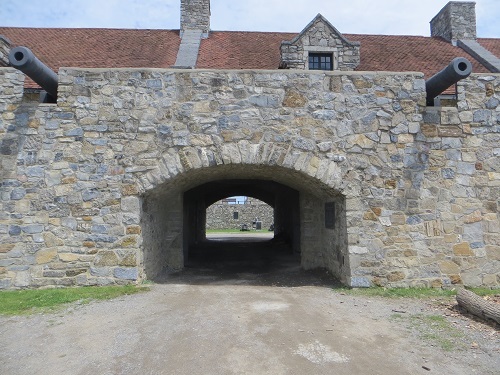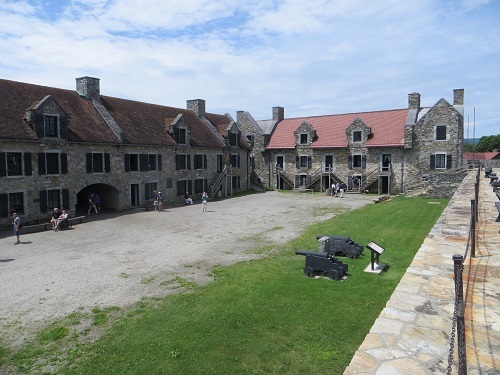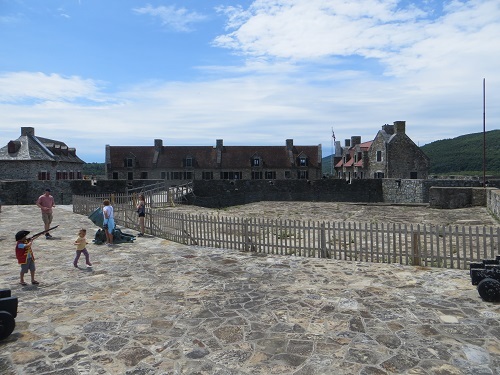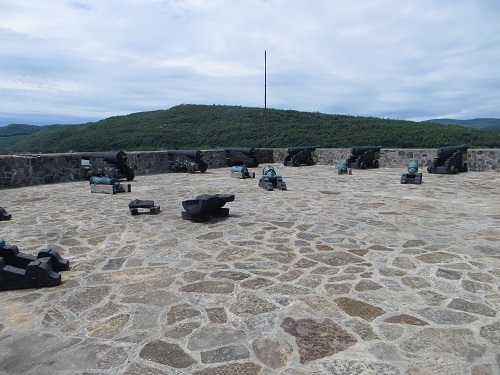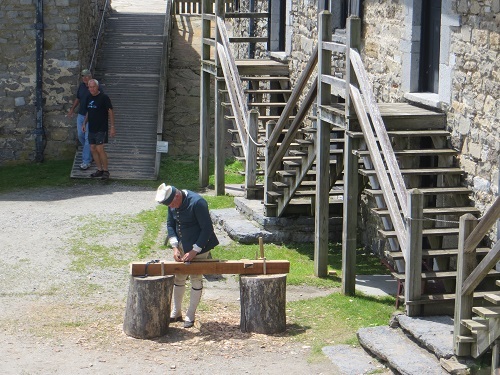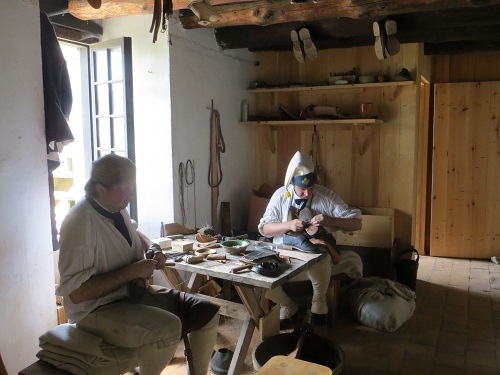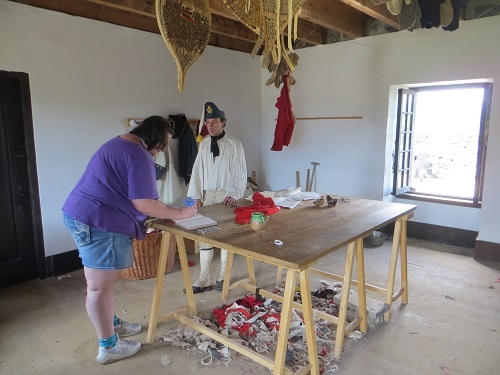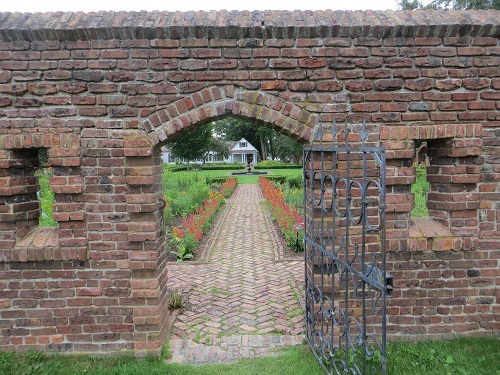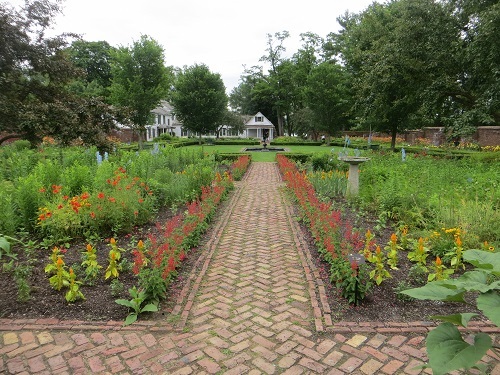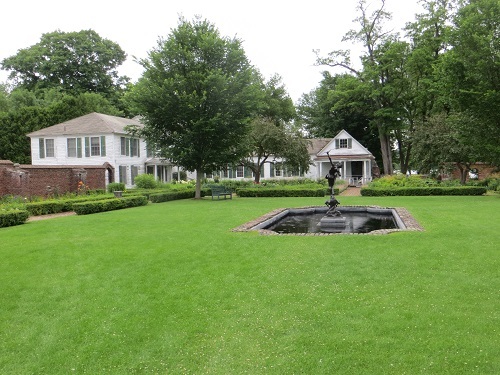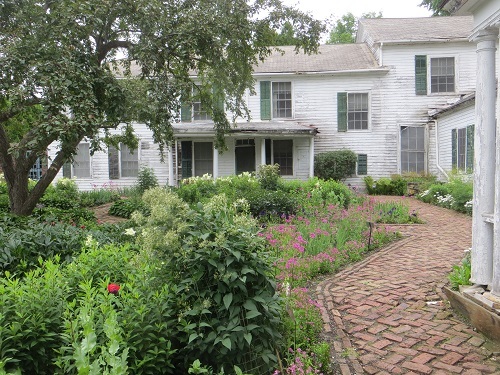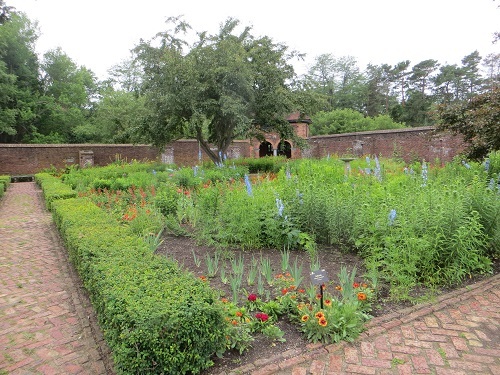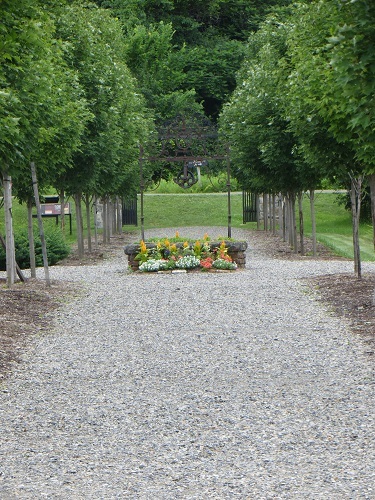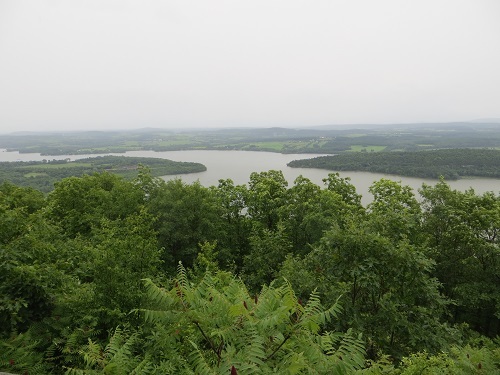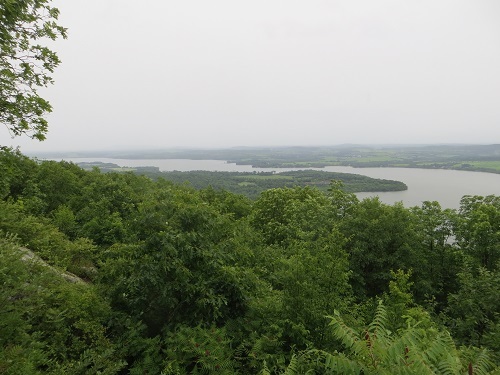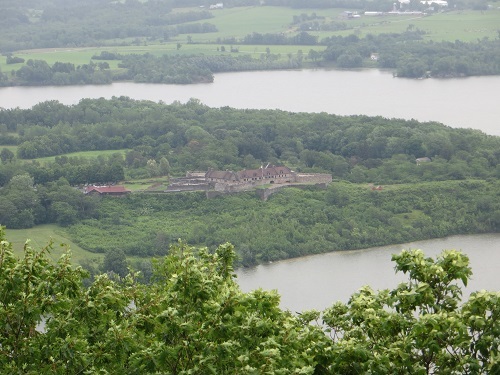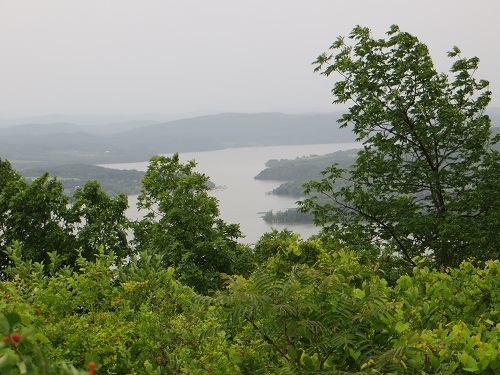If you want to break your train or car journey on the New York-Montreal run you could do worse than stop off for a couple of days in Lake George and Ticonderoga in the Adirondack Mountains, where British and French colonial forces duked it out before the U.S. war of independence.
The mountain scenery is delightful, contrasting as it does with the limpid clarity of lakes, the historic sites are both picturesque and evocative, and the tourist industry, though ubiquitous, is not so overwhelming as to mar your stay through stifling crassness.
Lake George
If you're travelling by train, Amtrak stops in both Ticonderoga and Fort Edward, but only in the latter will a car rental from nearby Queensbury pick you up.
Lake George Village is impossibly picturesque as it winds its way round the lower end of 32-mile long Lake George with its backdrop of mountain folds and some 400 verdant humpback islands and islets.
Lake George Village
It was here in 1755 that the British and their Iroquois allies scored a significant victory against the French and their indigenous supporters in the French and Indian Wars, giving the lake its latest name. Originally called Andia-ta-roc-te by its indigenous inhabitants, and renamed Lac du Saint-Sacrement (Lake of the Holy Sacrament) by the French, it was now rechristened in honour of King George II.
The British immediately built Fort William Henry named after Prince William Henry, a brother of the future George III, but the French destroyed it in a counter-attack in 1757, and their Huron allies massacred several score British before the French withdrew to their main base at Fort Carillon to the north.
Fort William Henry replica
In the late 19th and early 20th centuries Lake George's superb geography attracted adepts of the gilded age who built palatial mansions in Tudor and Georgian style.
Today you can visit a replica of the fort, built on the site in 1957, and study the various markers about town that attest to the strategic importance of the line of forts that the warring Europeans built on the lake and Hudson River axis between Montreal and New York.
Historical markers
Or you can just relax on one of several ersatz paddle-steamers that ply across the lake to take you back in time, more or less successfully depending on your disposition, though tragically a tourist boat carrying 47 mainly senior citizens capsised in calm weather 10 years ago, killing 20 people .
A spin on the lake
For a glorious overview, provided the clouds and mists allow, you can drive up to the summit of 2,021-foot high Prospect Mountain where on a clear day you can see, if not forever, then for a hundred miles.
Panorama from the mountain top
The narrow road that winds its way north along the forested western shore passes gorgeous bays and historic little villages. Eventually you'll reach La Chute River through which Lake George empties its waters into Lake Champlain, dropping 230 feet in 3 1/2 miles, on their eventual journey to the St. Lawrence.
Shoreline views
Here, on a bluff above the southern end of Lake Champlain, stands aptly named Fort Ticonderoga, from the Mohawk tekontaró:ken, At the Junction of Two Waterways, attesting to the millennia-old importance of river transport to the region's first inhabitants.
The fort was originally built by the French between 1755 and 1757 and called Fort Carillon. But in 1759 the British seized it, after a failed attempt the previous year when 4,000 French defenders repelled 16,000 Brits, and it reverted to the original Mohawk name.
Fort Ticonderoga
The British seized it again during the Revolutionary War in 1777, but abandoned it shortly afterwards when they failed to gain control of the Hudson River valley during the Saratoga Campaign. Many of the heroes of the Revolutionary War paced its courtyard.
Today you can wander round its battlements, barracks and storehouses, trip over its cannons, and generally let your imagination run riot as geezers in period costumes demonstrate the various activities of military and artisan life of 250 years ago.
More fort views
In a hollow beneath the battlements lies the King's Garden, a flowery bower surrounding the pavilion of the Pell merchant family, which was rented out as a hotel in the late 19th century. In the early 20th century latter-day Pells designed a garden in the style of 18th century military garrison gardens with a riot of colours bisected by brick paths.
King's Garden
Slightly further afield, 853-foot Mount Defiance lords it over fort, lake and neighbouring hills. Here, in 1777, the Brits set up an artillery battery dominating both Fort Ticonderoga and the fortifications atop Mount Independence in nearby Vermont, leading the revolutionaries to withdraw from both without a fight.
Mount Defiance panorama
[Upcoming blog next Sunday: A new series, Animal Planet on the Looney Front, begins with a look at Gorillas, Chimpanzees, Bonobos and Orangutans]
______________
By the same author: Bussing The Amazon: On The Road With The Accidental Journalist, available with free excerpts on Kindle and in print version on Amazon.

